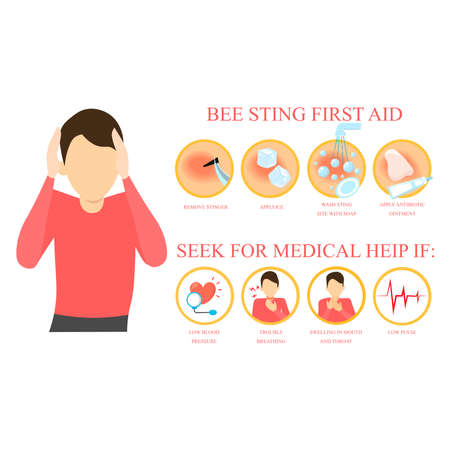Overview of Body Skin Tightening Treatments in Britain
Body skin tightening has become a prominent aspect of the British aesthetic industry, reflecting both advancements in technology and an increasing demand for non-surgical cosmetic solutions. Across the UK, clinics offer an extensive selection of procedures tailored to address skin laxity and promote a youthful appearance. Among these, non-invasive treatments such as radiofrequency (RF), ultrasound therapy, and laser-based modalities have gained significant popularity due to their minimal downtime and relatively low risk profiles. Additionally, minimally invasive options like micro-needling with radiofrequency and injectable skin boosters are widely accessible, providing enhanced results with still limited recovery time. These treatments appeal to a broad demographic, from individuals seeking subtle improvements to those desiring more pronounced rejuvenation without undergoing traditional surgery. The diversity of available body skin tightening procedures underscores the importance of adhering to robust aesthetic regulations and safety standards unique to Britain, ensuring that patient wellbeing remains at the forefront as the sector continues to evolve.
2. Regulatory Framework Governing Aesthetic Procedures
The regulatory landscape for body skin tightening treatments in Britain is both multifaceted and robust, reflecting the country’s commitment to patient safety and high standards within the aesthetics sector. The key authority overseeing such procedures is the Care Quality Commission (CQC), which regulates providers of medical treatments that use equipment capable of altering bodily tissues, including various non-surgical skin tightening devices. In addition to the CQC, practitioners must adhere to an array of professional guidelines and legislation designed to uphold public health and consumer protection.
Core UK Authorities and Legislation
| Authority/Legislation | Role in Regulation |
|---|---|
| Care Quality Commission (CQC) | Inspects and licenses clinics providing regulated activities, including certain skin tightening procedures using energy-based devices. |
| General Medical Council (GMC) | Oversees registration and conduct of doctors performing aesthetic treatments. |
| Health and Safety Executive (HSE) | Sets requirements for workplace safety, including the safe use of lasers or radiofrequency devices. |
| The Medicines and Healthcare products Regulatory Agency (MHRA) | Regulates devices used in skin tightening to ensure compliance with UK medical device regulations. |
| Consumer Protection Act 1987 | Protects clients against unsafe products or misleading claims related to aesthetic treatments. |
CQC Registration Requirements
Providers offering body skin tightening with certain technologies—such as intense pulsed light (IPL), laser, or high-intensity focused ultrasound (HIFU)—may require CQC registration if these are deemed medical treatments rather than purely cosmetic. Clinics must demonstrate compliance with infection control protocols, practitioner qualifications, equipment maintenance, and incident reporting processes.
Professional Standards and Practitioner Qualifications
Aestheticians performing skin tightening in Britain are strongly encouraged to hold recognised qualifications from accredited training bodies. While some non-invasive procedures may be carried out by trained beauticians, more advanced techniques typically require oversight by a registered healthcare professional—such as a doctor or nurse—who is indemnified and adheres to continuing professional development (CPD) standards set by relevant councils like the GMC or Nursing and Midwifery Council (NMC).
Summary Table: Regulatory Considerations for Clinics
| Requirement | Description |
|---|---|
| CQC Registration | Mandatory for clinics offering regulated medical skin tightening treatments. |
| Practitioner Accreditation | Required; must be able to demonstrate competence through certified training. |
| Device Compliance | Equipment must meet MHRA safety standards and be CE/UKCA marked. |
| Treatment Protocols | Standard operating procedures, informed consent, and aftercare must be documented. |
The evolving regulatory framework in Britain ensures that body skin tightening procedures are performed safely, ethically, and transparently. Clinics seeking to offer these services must stay abreast of ongoing legislative updates and maintain best practice in line with national guidelines to safeguard both practitioners and clients alike.

3. Safety Standards and Clinical Best Practices
Body skin tightening procedures in the UK are subject to stringent safety standards, reflecting both government regulation and industry-driven best practices. The Care Quality Commission (CQC) oversees clinics offering medical aesthetic treatments, ensuring compliance with health and safety legislation specific to cosmetic interventions. All practitioners delivering body skin tightening must possess recognised qualifications—such as certifications from the Joint Council for Cosmetic Practitioners (JCCP) or the British Association of Cosmetic Nurses (BACN)—demonstrating a robust understanding of anatomy, device operation, and infection control.
In addition to practitioner credentials, UK guidelines require clinics to use only CE-marked devices approved for cosmetic use, which ensures that equipment meets European safety benchmarks. Strict protocols for patient consultation, consent, and pre-treatment assessment are mandatory to mitigate risks and uphold ethical standards. Documentation of every procedure—including patient history, treatment parameters, and post-procedure care—forms part of best clinical practice, safeguarding both client welfare and practitioner accountability.
Regular staff training on emergency procedures, such as managing adverse reactions or burns, is also compulsory. Furthermore, ongoing continuing professional development (CPD) is encouraged to keep pace with evolving techniques and technologies within the sector. By adhering to these UK-specific standards, practitioners not only enhance outcomes but also reinforce public trust in the safety and professionalism of body skin tightening services across Britain.
4. Consumer Protection and Patient Rights
In the UK, consumer protection and patient rights are foundational aspects of the aesthetic industry, especially in body skin tightening procedures. Regulatory frameworks ensure that clients receive transparent, safe, and ethical treatment from practitioners and clinics. This section provides an overview of key mechanisms safeguarding British consumers.
Overview of Patient Consent Processes
Prior to any body skin tightening procedure, obtaining informed consent is a legal requirement. Practitioners must provide clear information regarding the nature of the treatment, potential risks, expected outcomes, alternative options, and costs involved. Clients should have adequate time to consider their decision and ask questions. The table below outlines the typical steps in the UK’s consent process:
| Step | Description |
|---|---|
| Initial Consultation | Assessment of client needs, discussion of medical history and expectations. |
| Information Provision | Detailed explanation of the procedure, risks, benefits, and alternatives. |
| Consent Form Signing | Written agreement confirming understanding and acceptance. |
| Cooling-Off Period | Time for clients to reflect before proceeding (where applicable). |
Advertising Guidelines
The Advertising Standards Authority (ASA) regulates marketing practices within Britain’s aesthetic sector. Advertisements for body skin tightening must be factual, non-misleading, and avoid exaggerated claims about results or safety. Key requirements include:
- No Unsubstantiated Claims: All advertised benefits must be supported by clinical evidence.
- Avoidance of Unrealistic Outcomes: Before-and-after imagery must not mislead or create false expectations.
- Transparency on Practitioner Credentials: Clinics must clearly display professional qualifications and regulatory affiliations.
- No Targeting Vulnerable Groups: Marketing materials must avoid exploiting insecurities or targeting under-18s.
Recourse Mechanisms for Clients
If a client is dissatisfied or harmed during a body skin tightening procedure, several recourse avenues are available in the UK:
| Mechanism | Description | Contact Point |
|---|---|---|
| Internal Complaints Process | Lodging a formal complaint with the clinic or practitioner involved. | Treatment Provider’s Complaints Department |
| Professional Regulator Escalation | If unresolved, complaints can be raised with bodies such as the General Medical Council (GMC) or Care Quality Commission (CQC). | GMC Website, CQC Website |
| Civil Litigation | Pursuing compensation through legal action in cases of proven negligence or harm. | Civil Courts / Solicitors Specialising in Medical Negligence |
| Alternative Dispute Resolution (ADR) | Mediation services for out-of-court resolution between parties. | NHS Complaints Advocacy or Independent Mediation Services |
Ensuring Transparency and Safety for British Consumers
The integration of robust consent processes, strict advertising standards, and accessible recourse mechanisms underpin consumer confidence in Britain’s aesthetic market. These measures not only protect individual rights but also elevate industry standards—ensuring all body skin tightening treatments are conducted ethically and transparently for every client across the UK.
5. Emerging Technologies and Regulatory Adaptation
The landscape of body skin tightening in Britain is rapidly evolving, driven by significant advancements in technology. New non-surgical modalities such as radiofrequency, ultrasound, and laser devices are increasingly popular for their efficacy and minimal downtime. As these technologies mature, they present unique challenges and opportunities for both practitioners and regulators. The UK’s regulatory bodies, including the Care Quality Commission (CQC) and the Medicines and Healthcare products Regulatory Agency (MHRA), are continuously adapting standards to ensure public safety without stifling innovation.
Technological Innovation Shaping Regulation
The introduction of advanced skin tightening treatments has necessitated a more nuanced approach to regulation. Devices now offer enhanced precision, customisable energy delivery, and improved patient comfort, leading to broader adoption within clinics across the UK. Regulators are therefore tasked with updating technical requirements for device approval and practitioner competency, ensuring that all equipment used meets rigorous British and European safety benchmarks. This dynamic environment requires ongoing collaboration between manufacturers, clinicians, and oversight bodies.
Balancing Progress with Public Safety
While the UK is keen to foster an environment that supports technological progress in aesthetics, patient safety remains paramount. Regulatory frameworks are being recalibrated to address emerging risks associated with novel procedures. For instance, the MHRA has introduced clearer guidelines on device classification and post-market surveillance, while the General Medical Council (GMC) emphasises continuous professional development for practitioners adopting new technologies. These steps are designed to mitigate adverse outcomes while allowing safe access to cutting-edge treatments.
Accommodating Innovation Responsibly
The UK’s approach balances regulatory flexibility with robust oversight. Stakeholder engagement is central to this process; regular consultations with industry experts, patient advocacy groups, and healthcare professionals inform updates to legislation and best practice guidelines. This ensures regulations remain relevant as new technologies emerge and consumer demand shifts. Ultimately, Britain’s regulatory adaptation seeks to uphold its reputation for high clinical standards while embracing the benefits of innovation in body skin tightening procedures.
6. Challenges and the Future Landscape of Aesthetic Regulation in Britain
The regulation of body skin tightening procedures in Britain is continually evolving, yet the sector faces a number of persistent challenges.
Ongoing Regulatory Challenges
One of the primary hurdles is the fragmented nature of oversight across different regions and practitioner types. With aesthetic clinics ranging from medically-led practices to beauty salons, ensuring a consistent standard of safety and efficacy proves complex. Additionally, rapid technological advancements outpace current regulatory frameworks, leaving gaps in guidance for innovative devices and techniques.
Enforcement Gaps and Consumer Protection
Despite well-intentioned standards, enforcement remains inconsistent. The lack of a mandatory licensing system for non-surgical cosmetic procedures means that some practitioners operate without adequate training or insurance, putting patient welfare at risk. Furthermore, consumers are often left to navigate confusing information about qualifications and approved technologies, which can result in suboptimal outcomes or even harm.
The Regulatory Evolution: Moving Towards Greater Oversight
The British government and professional bodies recognise these shortcomings and are working towards a more robust regulatory environment. Recent consultations have explored the introduction of a compulsory register for aesthetic practitioners and stricter controls on advertising and device approval. These initiatives aim to align British standards with best practices seen elsewhere in Europe, thereby strengthening consumer confidence and industry accountability.
The Role of Technology in Future Regulation
Emerging digital tools promise greater transparency, enabling real-time tracking of practitioner credentials and adverse event reporting. However, their integration into regulatory systems will require cross-sector collaboration between healthcare authorities, technology providers, and industry stakeholders.
Conclusion: The Road Ahead
The future landscape of aesthetic regulation in Britain will likely be characterised by increased harmonisation, stricter enforcement, and proactive adaptation to new technologies. While challenges remain, ongoing reform efforts signal a commitment to safeguarding public health while supporting innovation within the body aesthetics industry.


